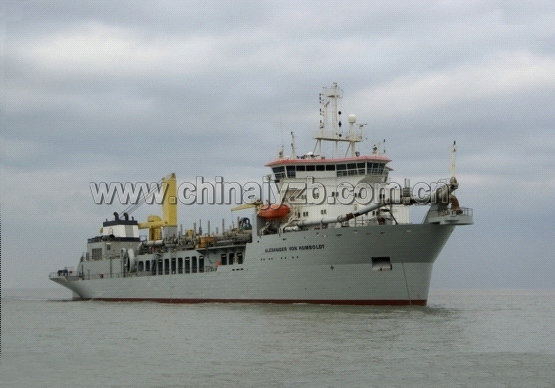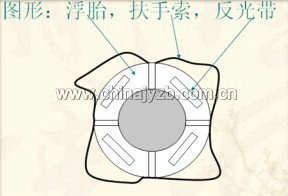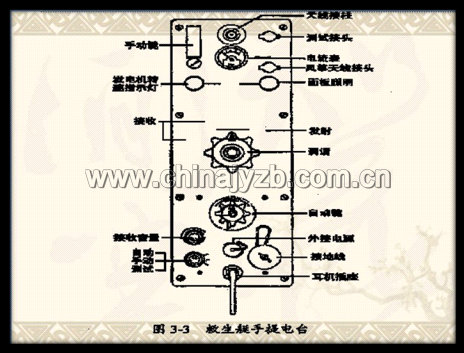
Configuration and use of ship lifesaving equipment (1)
Section 1 Types and Equipment Standards of Life Saving Equipment
Ships must be equipped with a variety of lifesaving equipment in accordance with the requirements of the lifesaving equipment specification in order to ensure the safety of crew members and passengers. So that in the event of a ship abandoning the ship, all occupants on the ship can use these lifesaving equipment to wait for rescue.
Types of life-saving equipment : lifeboats, liferafts, rescue boats, lifesaving buoys, lifebuoys, life jackets, throwing ropes, and life-saving pyrotechnic signals.
I. Provision of lifeboats, rescue boats and liferafts
other requirements:
* According to the 1982 Amendments to the 1974 International Maritime Safety of Life Conventions, passenger ships, fish processing vessels, etc. engaged in non-short international voyages should be equipped with: a lifeboat with a total capacity of not less than 50% of the total number of persons on board. The competent authority may permit the lifeboats to be replaced by liferafts of equivalent total capacity, provided that each side is equipped with a lifeboat sufficient to accommodate no less than 37.5% of the total number of persons on board; passenger ships of 500 gross tonnage and above shall be equipped with at least 1 on each side Rescue boat.
* For cargo ships: In addition to the above requirements, each ship should be equipped with at least one rescue boat. If the lifeboat meets the requirements of the rescue boat, it is allowed to use this boat as a rescue boat. For cargo ships of 85 metres in length or less, the liferaft on each side of the ship has a total capacity of 100% of the total number of persons on board. If such liferafts cannot be quickly transferred to any one side of the landing water, additional liferafts should be provided so that the total available capacity on each side can accommodate 150% of the total number of persons on board.
Second, the life jacket equipped 
1. The characteristics of the life jacket : It is the simplest life-saving tool on board and it is easy to wear.
2. The number of life jackets to be equipped: Each person on the ship is equipped with one person, and each person on duty in the cab and cabin is provided with one additional person. Passenger ships should also be equipped with a life jacket with a total of 5% of the total number of people on board.
3, the life jacket storage: stored on the deck clearly visible - easy to access and dry place.
4, the role of life jackets: can make the falling people upswing, keep the face, nose and mouth above the water without irrigation. Can reduce physical exertion, while reducing body heat loss.
Third, the life ring equipped
1. Purpose of use of lifebuoy: It is to help people who fall into the water, and to help people who fall into the water to rescue.
2. Manufacture: It is made in a ring shape with plastic or other materials approved by the Experience Boat Division. The foam that makes lifebuoys is closed-celled and is not affected by seawater and oils adversely affecting it at sea temperature or climate change. Can maintain its buoyancy and durability. The lifebuoy has canvas and handrails on the outside.
3, graphics: floating tires, handrails, reflective tape.
4. The lifebuoy is equipped according to the type of ship and the length of the hull - it cannot be said that it is equipped according to the structure of the ship. 
Fourth, equipped with rescue buoys
1. The concept of lifesaving buoyancy: It is a rectangular or circular floating body made of steel air or foam plastic bag made of canvas or glass fiber reinforced plastic.
2, the use of purpose: for the victims to support it, floating on the water waiting for help.
3ã€Structural features: There are rope nets or movable plank foot in the floating body, which can be used by the victims. The outer side of the floating body should be provided with a hanging half-chained handrail cable that surrounds the entire buoyancy device. The handrail cable should be of a diameter that is not Synthetic fiber rope less than 10mm.
4. Equipped with rescue buoys: It is mainly configured on passenger ships sailing in the I-class navigation zone and is configured at 3% of the total number of seafarers and passengers.
4. Equipped with rescue buoys: It is mainly configured on passenger ships sailing in the I-class navigation area, and is configured according to 3% of the total number of seafarers and passengers. Pictured
Fifth, the life-saving signal with 
1, equipped with requirements:
According to the "Code for the Survival of Life-saving Equipment for Sea-going Ships" published in 1983, the pyrotechnic signals to be provided by lifeboats and sampans in life-saving equipment of various ships are shown in the attached table.
According to the new provisions of the 83rd amendment to the 1974 International Convention, the number of red parachute rockets to be used in ocean-going ships (ie, A-type rafts) should be increased to four, and two additional orange-orange smokes should be added.
Lifeboats and boats should be equipped with pyrotechnic signals
Sixth, equipped with communication equipment
Equipment requirements:
1. All seagoing vessels should be provided with portable radios for lifeboats and rafts, and they should be kept in the cab or radio at ordinary times. When abandoning a ship for lifesaving, they should be carried by special personnel into the boat or raft as required by the deployment table. 
2. For passenger ships on international voyages, if there are more than 199 persons on board but less than 1,500 people, there must be at least one mobile lifeboat equipped with a radio station. The radio is installed in a special cabin inside the boat, equipped with special battery power, and the engine of the boat. There should be a generator for recharging the battery.
Lifeboat Portable Radio: A small radio station powered by hand. It is installed in a glass fiber container. Its outer cover is painted orange and yellow. It can be thrown into the water from a height of 15m. It will not be damaged and can float on the water. The total weight is no more than 23 kg. Its main components
Seven, throwing rope equipment
Ship rope throwing equipment Each ship should have 4 projectile rockets and 4 projectile cartridges each.
Configuration and Use of Ship Life Saving Equipment (2): Section 2 Basic Requirements and Functions of Life Saving Equipment
Allocation and Use of Ship Life Saving Equipment (3): Section 3 Layout and Use of Life Saving Equipment
Aluminum Spiral High Speed Door
The Spiral door offers high-speed operation for high-traffic situations and rigid aluminum slat construction that eliminates the need for a second security door. Crisp lines give the Spiral door a stylish look that's great for many types of commercial, automotive retail, government, institutional and industrial applications. The Spiral is ideal for automotive dealerships, government, parking and security. Benefits No metal-to-metal contact reduces wear on the door panel and offers fast, quiet operation.
Aluminum spiral High Speed doors are usually used wherever goods traffic occurs and where the doors have to fulfill special requirements. In the food and beverage industry, or Medical industry for example, special climatic conditions have to prevail; short opening and closing times reduce cooling loss, avoid airflow and enable a smooth operating procedure. They can also be designed in larger dimensions for the mining and aircraft industries.
Aluminum Spiral High Speed Door,Simple Hard Fast Door,High Speed Spiral Door,Metal Hard Fast Door
Shenzhen Hongfa Automatic Door Co., Ltd. , https://www.selfrepairinghighspeeddoor.com